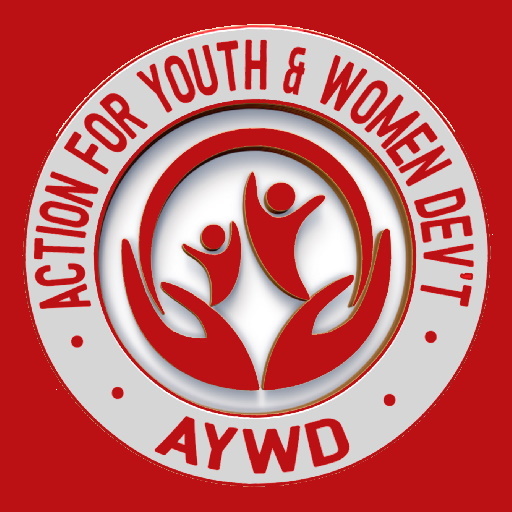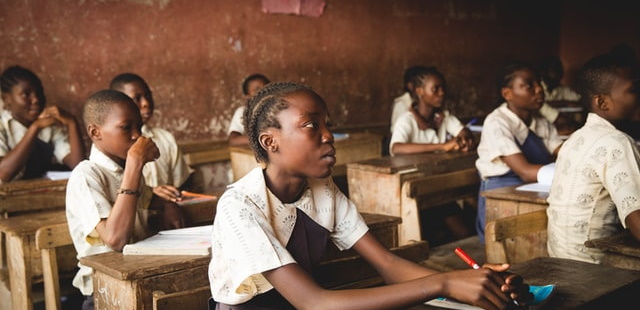Improving Livelihood of Communities
Food Security
Significant empowerment in the beneficiary communities was achieved during the last strategic plan implementation period. There has been an increase in rural incomes in the areas where AYWD implemented food security and rural income mobilization interventions.
The target communities can afford basic household items such as: sugar, salt, paraffin, books and pencils for their children. It has enhanced the livelihood of the beneficiaries and has also promoted financial literacy to some extent.
Beneficiaries are also relatively food secure. Given the continued relevancy of this intervention sub-theme in the community, it has been rolled over to the new strategic plan. The key planned interventions in this respect shall include the following:
- Conducting participatory needs assessments and baseline surveys and development of a program for enhancing food security and rural incomes.
- Developing and disseminating IEC materials and rolling out a capacity building program, to build the capacity of the community to address food security and rural income enhancement.
- Supporting communities to grow fast maturing and high yielding varieties of crops through supply of seed inputs, agricultural implements and related materials.
- Promoting adoption of productivity enhancing intensive farming systems like use of manure, mulching, pruning, zero grazing and mixed farming.
- Promotion of house business model enterprise development – through provision of heifers and goats on a revolving basis.
- Promotion of commercialization of agriculture through adoption of improved breeds of livestock matching with market preferences, the climatic environment and available feed resources; and,
- Promotion of value addition to agricultural produce using simple approaches like solar drying.
Vocational Skills Development for Youths, Women and Men
As agriculture shifts from subsistence to commercial production, the future of small-scale producers in developing countries depends on their being able to diversify into new income generating activities, including off-farm employment. Rural women’s employment prospects are severely limited.
Like women everywhere, they have primary responsibility for raising children, preparing food, and taking care of sick family members, plus extra burdens, such as collecting fuel wood. Gender roles reduce rural women’s participation in labour markets and confine them to lower paid and more precarious employment in agriculture.
As farmers, women grow traditional food crops, while men are more likely to grow cash crops and, therefore, are better positioned to capitalize on new market opportunities. Women farmers face systematic discrimination in access to the resources and services needed to improve their productivity, such as credit, secure land title and education. Gender bias in Uganda limits women’s use of machinery such as tractors, which affects the productivity of farms run by women.
Women farmers in some countries have established profitable businesses supplying international markets with organic or fair trade produce. But studies show that women can lose income and control as a product moves from the farm to the market – in Uganda, strong urban demand for leafy vegetables led men to take over their cultivation.
When off-farm employment is available – for example as farm labourers or in agro-processing – women continue to suffer gender discrimination. As casual or seasonal labourers, they are usually the first to be laid off.
Worldwide, the agro-processing of vegetables, flowers, shrimp, pigs and poultry is carried out mainly by women. Low-paid tasks in agro-processing are generally “feminized”, while men are more likely to have jobs that require training and earn higher wages.
Limiting women’s range of occupations has high efficiency costs. It also leads to less investment in girls’ education. Because girls receive less schooling, they are more likely to be employed as poorly paid “bonded labour” on large farms and plantations.
Rural wage employment can help women escape from poverty by increasing their income and strengthening their household bargaining power. However, there can be significant trade-offs. In Uganda, young women’s employment in the formal and informal sectors has brought them some economic benefits, but reduced the amount of time they have for communal work and child care.
While AYWD is to support the livelihood program, emphasis needs to be put on gender issues in the districts of operation to ensure that both males and females equally benefit.
Income Security
Family Economic Empowerment is a sub-theme under Livelihood and Economic Empowerment. Within the Family Economic Empowerment program, AYWD has mobilized and organized women and youth groups in Wakiso district to start or boost their own income generating projects.
AYWD has provided start up revolving funds (seed capital) to the organized rural women/youth groups to invest in their identified economic projects hence boosting their income generating projects and improving their social and economic wellbeing.
Beneficiaries of this intervention have been trained in enterprise development and group dynamics and development, simple book keeping, leadership skills, record keeping, savings mobilization and micro credit management. It is envisaged that beneficiaries of this intervention will be economically empowered and have been able to take care of themselves and their families. It is further envisaged that beneficiaries of this intervention have acquired some financial literacy skills
Crop production has been supported by AYWD within vulnerable communities of women with special focus on widows that are affected by severe floods, food insecurity and drought during various times of the year to enhance food security through;
- Providing support to enhance community livelihoods through provision of farming equipment such as: oxen and ox ploughs and yokes to facilitate ploughing of a sizeable acreage by targeted communities.
- Provision of improved seed planting materials such as: maize and bean seeds, cassava cuttings, sorghum, groundnuts to improve productivity to farmers among the targeted communities.
- Mobilization of farmers into groups for training in modern agronomic practices and receipt of extension support.
- Training Community Agricultural Trainers (CATs) to support farmer groups in the communities with appropriate farming technical skills and agricultural extension support.
- Undertake monitoring and supervision to ensure compliance to modern farming methods.
Education Support
Improving school learning environment
This is one of the thematic areas that AYWD has implemented. Learning environment within schools in Uganda is characterized by shortages in infrastructure that includes latrines, classrooms, desks, water and teachers’ houses. Currently, pit latrine coverage stands at 69% nationally while pupil: classroom ratio stands at 68 nationally. However, circumstances within AYWD areas of intervention are different and depict poorer performance against national level indicators. AYWD has implemented interventions that improve accessibility to latrines and water in schools. Where practically feasible, AYWD has tried to support deserving needy schools with classroom construction or teachers’ house construction and is trying to also support schools access safe water. This could be through provision of water tanks or through construction of shallow wells or boreholes. If implemented, beneficiary schools will be more hygienic and children will be healthier. In addition, the improved learning environment may improve pupil attendance. If implemented, AYWD will have greatly improved livelihoods of the beneficiary schools.
Government of Uganda is implementing the Universal Primary Education (UPE) and Universal Post Primary Education and Training (UPPET). Previous studies show that although 94% of Ugandan children enroll in primary schools, as few as 32% complete the final class P7. Ordinarily, UPE and UPPET interventions are good and would encourage improved and increased enrollment and retention although this is not the case. While children enroll in schools, they drop out for various reasons that include among others the following:
- Financial constraints pose serious challenges for poor families and impair their ability to provide their children with scholastic materials such as: uniforms, pens, pencils and exercise books.
- Failure to provide children with food.
- Early marriages and/or pregnancies.
- Provision of labour in family gardens during peak planting seasons and harvesting seasons.
- Engaging in petty trade.
AYWD has been addressing some of the above listed challenges in its program of sustainable agriculture where schools are encouraged to grow their own food and consume it. Within this program, AYWD provides schools with improved seed planting materials and trains pupils and teachers in best agronomic practices. The schools harvest this food and consume it. In addition, where schools grow more food than can be consumed at one go, they are supported to construct food granaries for safe storage of their food. It is recommended that AYWD scales up this intervention to improve on pupil welfare at school and also to address drop out to some extent.
Functional adult literacy
According to an IFAD study under the Gender Strengthening Programme for Eastern and Southern Africa, done in 2000, illiteracy in Uganda is 55.1% among women, compared with 36.5% among men .
Usually, in rural areas the gap is larger and literacy rates are lower. Functional adult literacy programmes in Uganda involve other useful learning besides reading, writing and numeracy skills. Functional literacy may indeed be a powerful tool for empowering poor rural women, particularly if they can apply their new learning and skills.
Studies have been carried out that show that linking functional literacy training to credit helps enhance women’s control over income. Furthermore, Basic numeracy is particularly useful for women in managing their agricultural and off-farm enterprises, more so when credit and savings are involved.
Experience also shows that men’s illiteracy can restrict women’s chances of literacy. Given the fact that AYWD targets both youth and women to liberate them from the vicious cycle of poverty, this would be an appropriate intervention to complement other proposed interventions during the new strategic plan period.
Child and Youth Development
A Child Holistic integrated learning and development programme is being implemented in Wakiso district and shall also be extended to other. It targets families with children that are between 6-12 years of age. The families are supported with items such as: improved seeds and high yielding animals such as: goats, cows and pigs.
The essence of this intervention is to enable the beneficiary households gain access to increased incomes so that they enjoy better livelihoods that translate into better care for the marginalized children. The demand for this intervention is insatiable as was found out by the evaluation team. AYWD therefore needs to implement programs that will consolidate gains registered in the past five years.
AYWD is to scale up its youth empowerment programme. This scale up is expected to be designed and programmed to establish relevant linkages to the Government Youth Enterprise Scheme for funding and value addition, to achieve synergy. The key interventions planned for implementation with respect to this effort include the following;
- Carrying out youth identification and needs assessment for enterprise development and management skills training. This activity shall yield a listing of youths eligible for enterprise development and management training.
- Carrying out youth training programs to equip youths with skills to undertake and manage small enterprise projects and write project proposals that will enable them access loans from AYWD. Enterprise Groups of youths who have received training in enterprise management will be a key output from this intervention.
- Mobilizing youths to form Youth enterprise groups and provide them with micro-credit to implement small agro-enterprises and related rural supply enterprises. Formation of functional youth enterprise groups that are eligible to access and use micro-credit will be a key output from this intervention.




